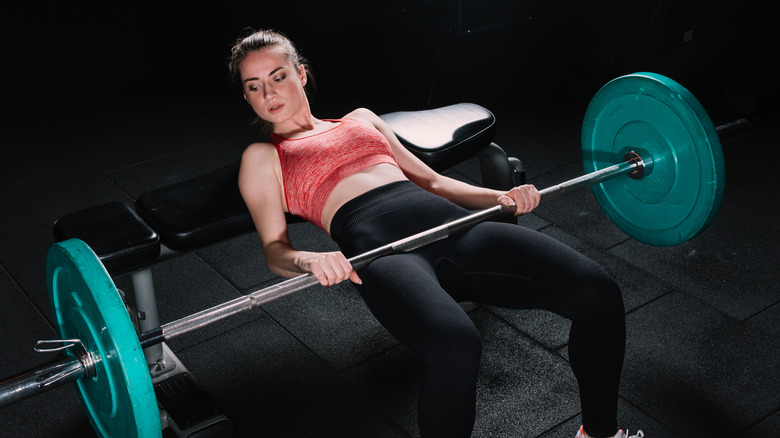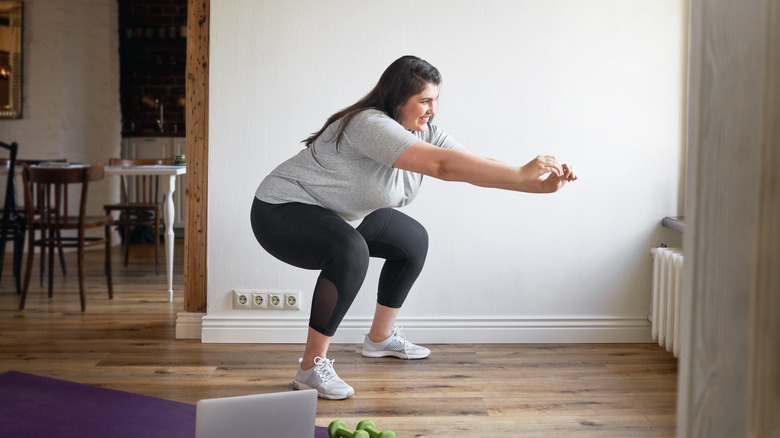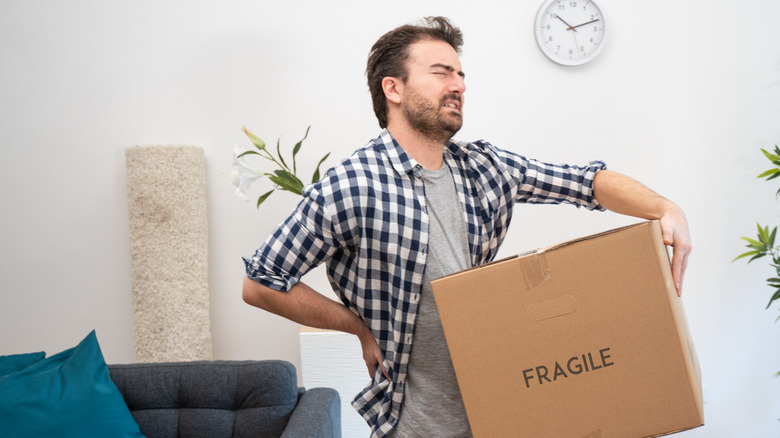Why You Should Add Hip Thrusts To Your Next Workout
Hip thrusts are a great way to build strength and power in your lower body. There are many reasons you should add them to your next workout. For one, hip thrusts are an excellent way to build glute strength (via Self). The glutes are the largest muscle group in the body, so it's important to train them regularly. Hip thrusts are one of the best exercises to target these muscles and make them stronger over time. Hip thrusts also help improve hip mobility, which is important for overall health and wellness (via Three Pillars of Fitness). Hip thrusts can help improve hip mobility by lengthening the muscles and improving your range of motion.
If you're an athlete, you'll see many benefits from adding these to your workouts. Training your lower body is essential for improving performance, and hip thrusts can help you build strength and power in your legs, which can translate to better results on the field or court. If you aren't an athlete, you should still try this exercise because hip thrusts are easy to do at home. All you need for a hip thrust is a sturdy chair or bench. You can do them anywhere, anytime, with no gym required. Hip thrusts can also be modified to suit any fitness level. If you're new to exercise, start with a bodyweight hip thrust, and as you get stronger, you can add weight by holding a dumbbell or barbell across your lap.
Other ways to build lower body strength
Although hip thrusts are one of the best ways to strengthen your glutes, this isn't the only exercise that will help you build lower body strength. Other great lower body exercises include squats, lunges, deadlifts, and glute bridges (via Men's Journal). To perform a squat, start with your feet shoulder-width apart and lower your hips down until your thighs are parallel to the ground. Make sure to keep your knees in line with your toes and drive through your heels to stand back up.
To do a lunge, start in a split stance with one foot in front of the other and bend both knees to lower yourself down toward the ground. Be sure to keep your front knee above your ankle and press through your heel to stand back up. You can alternate legs or do all reps on one side before switching. To do a deadlift, start with a barbell on the ground in front of you and bend down, keeping your back straight, to grab it. From here, lift the barbell up by extending your hips and knees until you're standing tall. Lower it back down to the ground under control and repeat. Finally, to perform a glute bridge, lie flat on your back with feet flat on the ground and shoulder-width apart (via Self). Press through your heels to raise your hips off the ground, squeeze your glutes at the top of the movement, then lower back down.
Why is it important to have a strong lower body?
It is important to have a strong lower body for several reasons. For one, having strong legs and hips can help prevent injuries because they are the foundation of our skeletal system and provide stability when we move (via Livestrong). Strong legs and hips can also help improve our balance and coordination, which can help us stay safe when participating in activities like sports. Additionally, having a strong lower body can help us move more efficiently. This means that we can save energy when walking or running, which can be helpful if we are trying to lose weight or increase our endurance. Finally, strong legs and hips can simply make everyday activities easier (via Healthline). Carrying groceries, climbing stairs, or even just standing up from a chair can be made simpler when we have a strong lower body.
If you feel like your lower body isn't strong enough, consider working out with a personal trainer. They can help you identify which exercises will work best for you and help you stay motivated. Additionally, there are many at-home workouts that can help improve lower body strength. Bodyweight squats, lunges, and calf raises are all great options. Start with just a few repetitions and increase as you get stronger. Remember to focus on form rather than speed or reps.


